
Origini
Scope & Guideline
Advancing Archaeological Insights and Innovations.
Introduction
Aims and Scopes
- Archaeological Methodologies:
'Origini' showcases diverse archaeological methods, including field surveys, excavations, and advanced techniques such as geophysical prospection and stable isotope analysis to investigate ancient sites. - Material Culture Studies:
The journal emphasizes the analysis of material remains such as pottery, tools, and architectural structures to understand cultural practices, trade networks, and social organization in prehistoric societies. - Socioeconomic Dynamics:
Research often delves into the socio-economic interactions of ancient communities, exploring themes like trade, subsistence strategies, and social hierarchy through archaeological evidence. - Regional Interaction and Connectivity:
A significant focus is placed on the interactions between different regions, investigating how cultural and economic exchanges shaped the development of societies across time and space. - Cultural Symbolism and Interpretation:
The journal explores the symbolic meanings behind artifacts and architecture, contributing to discussions on identity, belief systems, and cultural continuity or change throughout history.
Trending and Emerging
- Interdisciplinary Approaches:
There is a growing trend towards integrating diverse fields such as environmental science, anthropology, and technology in archaeological research, aiming to provide holistic insights into ancient societies. - Regionalism and Interaction Networks:
Recent publications increasingly emphasize the concept of regionalism and the examination of interaction networks, showcasing how ancient communities were interconnected through trade and cultural exchanges. - Digital Archaeology and Technological Innovations:
The incorporation of digital methods and technologies, including GIS and 3D modeling, is becoming more prominent, enabling researchers to analyze and present archaeological data in innovative ways. - Chronological Frameworks and Climate Impact:
Emerging themes include the examination of chronological frameworks in relation to climate events, exploring how environmental changes influenced human behavior and settlement patterns. - Symbolic and Identity Studies:
There is a notable increase in research focusing on the symbolic aspects of artifacts and their implications for understanding identity, belief systems, and cultural narratives in ancient societies.
Declining or Waning
- Paleoethnobotany:
While earlier publications included significant studies on plant remains and their implications for understanding ancient diets and agriculture, this theme has become less prevalent in recent issues. - Cannibalism and Violence Studies:
Although initial research focused on the darker aspects of human behavior in prehistoric contexts, such as cannibalism and interpersonal violence, recent articles have shifted towards broader socio-cultural dynamics, leading to a decrease in this specific focus. - Localized Case Studies:
There appears to be a waning interest in highly localized case studies that focus solely on single sites or artifacts without broader regional or comparative implications, as the journal increasingly favors studies that emphasize interconnectedness.
Similar Journals
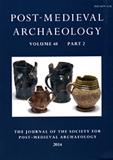
Post-Medieval Archaeology
Connecting Artifacts to Historical NarrativesPost-Medieval Archaeology is a distinguished academic journal published by ROUTLEDGE JOURNALS, TAYLOR & FRANCIS LTD, focusing on the rich tapestry of human history from the post-medieval period through the lens of archaeology. With a proud publication history spanning since 1967, this journal addresses the integration of archaeological findings with historical narratives, contributing significantly to the field of archaeology and history. The journal holds an impressive categorization within the Q2 and Q3 quartiles for Archaeology and History in 2023, showcasing its commitment to academic excellence and relevance within these disciplines. Researchers and professionals alike will find value in its critical examinations and innovative methodologies that illuminate the past, making it a pivotal resource for those engaged in archaeological research. As an essential platform for scholarly debate and dissemination, Post-Medieval Archaeology continues to advance the understanding of post-medieval contexts and material culture, fostering discussions that resonate through various areas of the arts, humanities, and social sciences.
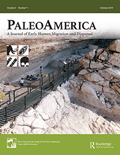
PaleoAmerica
Engaging with the Legacy of Ancient CivilizationsPaleoAmerica, published by Routledge Journals, Taylor & Francis Ltd, is a leading academic journal dedicated to advancing the study of ancient peoples of the Americas. With a strong presence in the fields of archaeology, ecology, and paleontology, this journal holds Q1 rankings in its respective categories for 2023, reflecting its exceptional impact and relevance in academia. Covering a broad spectrum of topics related to human and ecological evolution from 2015 to 2024, PaleoAmerica serves as a vital resource for researchers, professionals, and students eager to explore pivotal findings and theories related to the prehistoric populations of North and South America. While the journal operates under a subscription model, its comprehensive scope and high-quality peer-reviewed articles make it indispensable for those engaging with the complex narratives of ancient American life.

JOURNAL OF WORLD PREHISTORY
Elevating Global Archaeological Discourse Since 1987JOURNAL OF WORLD PREHISTORY, published by SPRINGER, stands as a premier platform for disseminating pioneering research and scholarship in the field of archaeology. Boasting a prestigious Q1 status in Archeology and a remarkable 97th percentile ranking in its category, this journal has made significant contributions to the understanding of global prehistory since its inception in 1987. It serves as an invaluable resource for researchers, professionals, and students alike, providing access to high-quality articles that explore diverse archaeological methodologies, theoretical frameworks, and case studies. Although it is not an open-access journal, its impact and relevance continue to resonate within the academic community, fostering critical discussions and advancing knowledge in this vital discipline. With publications converging from 2006 and set to continue until 2024, the JOURNAL OF WORLD PREHISTORY remains committed to advancing archaeological research and enhancing interdisciplinary collaboration.
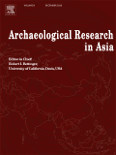
Archaeological Research in Asia
Diving Deep into Asia's Archaeological Narratives.Archaeological Research in Asia is a leading academic journal published by Elsevier Science Ltd, dedicated to advancing the understanding of archaeological practice, theory, and interpretations within the Asian context. Since its inception in 2015, the journal has emerged as a cornerstone in the field, holding a prestigious Q1 category status in both Archaeology and Arts and Humanities according to the latest evaluations in 2023. With its remarkable Scopus rankings, placing it at #45 out of 413 in the Arts and Humanities and #45 out of 354 in the Social Sciences, this journal offers a rich platform for the dissemination of original research articles, case studies, and scholarly reviews. Targeting archaeologists, historians, and cultural heritage professionals, the journal aims to facilitate meaningful dialogue and collaboration across disciplines. Although it does not currently operate on an open access model, the journal's commitment to high-quality scholarly discourse ensures that it remains a vital resource for those engaged in the intricacies of Asian archaeology.
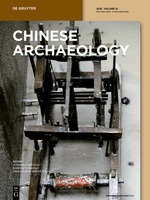
Chinese Archaeology
Connecting Scholars to China's Archaeological WondersChinese Archaeology, published by WALTER DE GRUYTER GMBH, is a leading journal dedicated to the exploration and study of China's rich archaeological heritage. With an ISSN of 2160-5025 and an E-ISSN of 2160-5068, this journal serves as an essential platform for scholars, researchers, and enthusiasts in the field of archaeology, offering a blend of original research articles, reviews, and critical essays that address both contemporary issues and historical narratives. While it currently operates under a conventional access model, making cutting-edge research available to a select audience, it plays a crucial role in advancing knowledge about China's archaeological sites, artifacts, and past civilizations. Given the increasing interest in Eastern archaeology and its significance in a global context, Chinese Archaeology is positioned as a pivotal resource for understanding and interpreting the complexities of China’s historical evolution. Researchers and academics are encouraged to contribute and engage with this vital field of study to foster greater insights and innovations.

Yorkshire Archaeological Journal
Investigating the Archaeological Treasures of YorkshireYorkshire Archaeological Journal, published by Routledge Journals, Taylor & Francis Ltd, stands as a pivotal resource in the field of archaeology, particularly focused on the rich heritage and archaeological research within the Yorkshire region of the United Kingdom. With a dedicated ISSN of 0084-4276 and an E-ISSN of 2045-0664, this journal provides both researchers and practitioners valuable insights into archaeological discoveries, methodologies, and theoretical frameworks. While it holds a Q3 ranking in both Archaeology (Arts and Humanities) and Archaeology (Social Sciences), its contributions remain significant for advancing discussions and knowledge within the discipline. The journal's archival depth, converging from as early as 1980 and continuing robustly into 2024, showcases a commitment to fostering academic discourse and exploration of archaeological heritage. Although it does not currently offer open access, its rigorous peer-reviewed articles make it an essential reference for academics, professionals, and students alike who are eager to deepen their understanding of archaeology and its applications.

Revue Archeologique du Centre de la France
Connecting Histories: Central France's Archaeology at Your FingertipsRevue Archeologique du Centre de la France is a prestigious academic journal dedicated to the field of archaeology, with a special focus on the rich historical and cultural heritage of central France. Published by FED EDITION REVUE ARCHEOLOGIQUE CENTRE FRANCE, this journal has been an open-access platform since 2004, ensuring that researchers, professionals, and students can freely access cutting-edge archaeological findings and scholarly discussions. With an acute emphasis on disseminating knowledge and fostering ongoing dialogue in archaeology, Revue Archeologique du Centre de la France serves as a vital resource for those keen to explore the complexities of French archaeological studies. Housed in Tours, this journal not only highlights regional heritage but also situates it within broader archaeological frameworks, making it an essential contribution to the field. Researchers can look forward to engaging with a diverse array of articles that cover both theoretical and applied aspects of archaeology, bolstering the understanding of our shared past.

Kratkie Soobshcheniya Instituta Arkheologii
Unveiling the Past, Shaping the FutureKratkie Soobshcheniya Instituta Arkheologii is a prestigious academic journal published by IZDATELSTVO NAUKA, specializing in the fields of archaeology and history. With an ISSN of 0130-2620, this journal has established itself as a vital resource for scholars, researchers, and students engaged in the humanities, particularly within the Russian Federation. Recognized for its high-quality contributions, it has achieved a remarkable Q1 ranking in both Archaeology and History for the year 2023, demonstrating its significant impact and relevance in these disciplines. Although it does not provide open access, the journal's robust positioning in Scopus — ranking #634 in History and #208 in Archaeology — further attests to its scholarly authority and the insightful research it disseminates. The journal covers a comprehensive range of topics, facilitating a deeper understanding of archaeological practices and historical methodologies, thereby fostering academic dialogue and knowledge advancement from 2018 through 2024. Addressing an international audience of professionals and students alike, Kratkie Soobshcheniya stands as a cornerstone for innovative research in archaeology and history.

Interdisciplinaria Archaeologica-Natural Sciences in Archaeology
Innovating Archaeological Research with Natural ScienceInterdisciplinaria Archaeologica-Natural Sciences in Archaeology is a distinguished journal published by UNIV HRADEC KRALOVE, dedicated to the exploration and integration of natural sciences within the context of archaeology. With an impact factor that reflects its strong footing in the academic community, this journal provides a vital platform for interdisciplinary research, fostering collaboration among archaeologists, scientists, and scholars from diverse fields. Since its transition to Open Access in 2010, it has made significant contributions to the accessibility of research findings, connecting global audiences interested in the archaeological sciences. Based in the Czech Republic, the journal has achieved impressive rankings—placing in the Q2 quartile across both Archaeology and Arts and Humanities categories, as well as respectable standings in the Social Sciences domain. Over its converged years from 2014 to 2024, it has published cutting-edge studies that enhance our understanding of past human behaviors through scientific methodologies. Researchers, professionals, and students are encouraged to engage with the journal’s content to contribute to and benefit from the vibrant discourse in archaeological science.
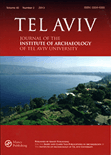
Tel Aviv-Journal of the Institute of Archaeology of Tel Aviv University
Cultivating Scholarly Dialogue in ArchaeologyTel Aviv-Journal of the Institute of Archaeology of Tel Aviv University, published by Routledge Journals, Taylor & Francis Ltd, stands as a premier academic publication in the fields of archaeology, cultural studies, and history. Established in 1974, this journal has significantly contributed to archaeological scholarship and fosters a rich dialogue among researchers and practitioners worldwide, particularly in the context of the Middle East. With a remarkable Q1 ranking in multiple categories, including Archaeology and Cultural Studies, it is recognized for its high-quality, impactful research. The journal's audience consists of academics, professionals, and students eager to explore new findings and interdisciplinary approaches. While it does not operate under an open-access model, its scholarly articles are pivotal for advancing knowledge and understanding in archaeology and related fields, thus continuing its legacy as a vital resource for cutting-edge research up to 2024.